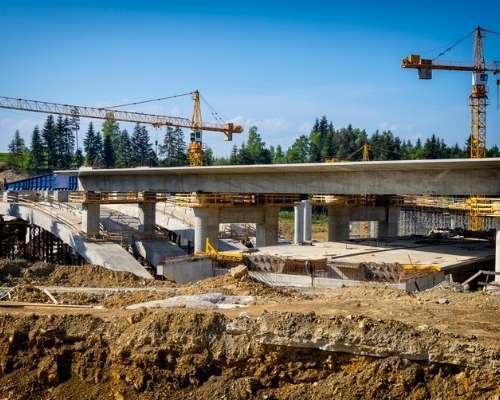4 Minute Read
October 29, 2020
0%
Most of us are ready for 2020 to be over, but as we head into the last month of the year, many eyes are on 2021. A major election is now behind us, but COVID still looming and questions abound about how strong construction will be when the pandemic finally passes — and when that will be. Despite current hardships, hope looms on the horizon as years of fruitful work awaits contractors, technology continues to transform the industry and more opportunities for women may help fill the skilled labor gap in the long run. Here’s a look at some of the stories we followed in November:

A November article from Construction Dive looks at the overall impacts of COVID on the construction industry thus far and why it may be more at risk than most other industries. The article culls together a number of media reports from various states to paint an unsettling picture. Among the notes: Construction sites in Nashville, Tenn. accounted for the second highest number of COVID clusters, behind only long-term health care facilities; construction workers in Texas were five times more likely to be hospitalized with COVID than any other industry; and construction related outbreaks accounted for either second or third-most in Washington, Michigan and Utah.

President-elect Joe Biden is already working deep into his transition plan as he prepares to take office, and numerous media reports note that one of his chief priorities in the months ahead is putting plans in place to address the nation’s crumbling infrastructure. Biden has favored a technology-centric approach to new infrastructure projects - from next-generation telecommunication projects to energy efficient buildings to high-speed transportation and more. These types of construction projects could very well favor contractors with tech-savvy approaches, as well as a host of new startup companies.
The Takeaway: With these plans, there is expected to be significant capital expenditures - potentially in the trillions of dollars. Of course, there could still be partisan blocks on spending bills, as we’ve seen trip up other infrastructure spending proposals over the past 15 years or so. Yet, the past couple of years have shown more support for infrastructure projects from both sides of the political aisle, which improves chances that contractors could see huge financial windfalls in the years ahead. But if they want to cash in, these companies need to be embracing the latest technologies and putting them into practice right now.

In a November report Construction Coverage culled data from the U.S. Census Bureau to show where women are having the greatest impact in the U.S. construction market, and where they were seeing the greatest opportunities for jobs and career advancement. The report noted that while the industry as a whole has stayed relatively flat (around 10%) in terms of the female-to-male ratio in construction, several large and small- to-mid-sized cities were bucking traditional trends. Of large cities, Minneapolis led the way with a 19.1% share of female employment in construction and median earnings of $54,521. Seattle was second (17.6% share and $70,966 in median earnings), with San Francisco third (17.0% and $70,711 in median earnings). Smaller communities did even better in terms of women in the construction workforce, with Sandy Springs, Ga. first at 30.7%, followed by Carmel, Ind. at 29.3% and Burbank, Calif. At 25.5%
The Takeaway: It’s great to see a stronger push for the advancement of women in construction careers at least on some local and regional levels. However, the industry as a whole still has a long way to go. The women paving the paths today are showing that gender doesn’t matter when it comes to successful construction careers — whether in the back office, in construction leadership positions, or out in the field. And we’ve seen leading contractors take leading roles in fostering more diversity and inclusion among its workforces. Stronger efforts to recruit and train more women and develop sustainable construction careers for them will go a long way toward addressing the skilled labor shortage.
Want more takes on news and issues permeating the construction industry? Be sure to subscribe to our blog for the latest trends and industry news, or visitviewpoint.com to learn how leading-edge technologies can help grow your construction operations.
4 Minute Read
October 29, 2020
5 Minute Read
October 1, 2020
5 Minute Read
August 27, 2020